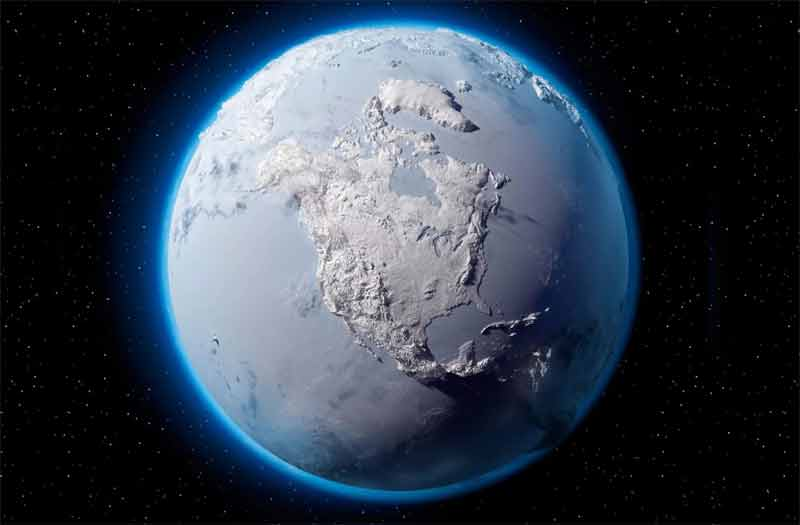?Snowball Earth: Has our planet ever been completely covered in ice

It is likely that about 720 million years ago, during the so-called cryogenic era, the Earth was completely frozen.
If our planet had captured the same fraction of sunlight some 4 billion years ago as it does today, its surface temperature would have been about 20 degrees Kelvin lower. Four billion years ago, the star of our solar system, the sun, shone at only three-quarters of its current brightness.
Has our planet ever been completely frozen?
Based on the evidence we have gathered so far, it is likely that around 720 million years ago, during the so-called Cryogenic Age, the Earth was completely frozen over. Two putative major global glaciations characterized the Cryogenian. They are called the Snowball events of the Sturtian Glaciation and the Marinoan Glaciation. Both took place 717-660 million years ago and 645-635 million years ago.
The problem is that while we have some tentative evidence supporting the Snowball Earth episodes, not everyone agrees with them because they're so misunderstood. Nevertheless, as the book “Life in the Cosmos” by Harvard astronomer Professor Avi Loeb and post-doctoral student Mansavi Lingam explains, the Sturtian glaciation and the Marinoan glaciation were probably essential to the development of various forms of animal life for various reasons.

The end of the Sturian and Marinoan glaciations
The end of these periods of glaciation is linked to a strong melting of the glaciers. This has fed the oceans with increased nutrients. Phosphate, for example, was "injected" into the Earth's oceans, which likely allowed the rapid growth of algae. Algae have therefore been a possible food source for ocean animals. More food, easier to diversify. This hypothesis has been validated by the study of sedimentary rocks which indicate an increased availability of phosphate at the end of the Sturian and Marinoan glaciations.
?Why is this importan
This is significant because the Snowball Earth episodes were a sort of environmental trigger for increased oxygen levels in Earth's oceans and atmosphere. This means that the vast glaciations were practically a delivery system that dumped essential nutrients into the ocean. As a result, many complex ecosystems are born. The Snowball Earth events took place just before the sudden appearance of multicellular life forms. Scientists call this the Cambrian explosion. Scientists now believe that the most recent Snowball episode triggered a boom in life and the evolution of multicellularity.
Check out the video below, which gives an overview of Snowball Earth.
Source: websites

